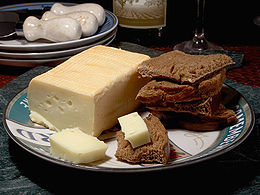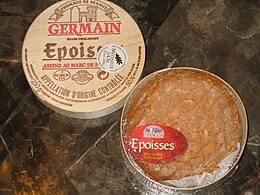Why is it that everything deep-fried tastes so darn good? Damn be the calories. Let's take dollops of gooey dough dropped
into hot oil, deep-fried to golden deliciousness, sprinkled with cinnamon
and sugar and served warm, for example. How yummy does that sound?
Sometime ago I read that every nationality has its own version of
fried dough. I believe this to be true. Sadly, I've not tasted every single version (not by lack of trying).
New Orleans has beignets; Spain has churros; Italy has zeppole; Portugal has malasadas; Canada
has, well, we have BeaverTails (Queues de
Castor in French).
So, what exactly is a BeaverTail? A true Canadian culinary treat, that's for certain! They are
batches of dough that are stretched by hand to resemble the tail of a beaver.
Then these deliciously addictive, traditional whole-wheat pastries are
deep-fried in canola oil, served piping hot, drizzled with butter and your
choice of toppings.
The current BeaverTail evolved from a family recipe passed
down through at least three generations and is similar to a yeasted, crack-wheat treat enjoyed in early Canadian and American farms. The first commercially
produced BeaverTail was sold in 1978. The first storefront opened in June
1980, in Ottawa’s Byward market, one of Canada’s oldest and largest public
markets.
 |
| photo via ottawatourism.ca |
In February of 1981, BeaverTails made their first appearance
along Ottawa’s most famous winter attraction and the longest skating rink in
the world, the Rideau Canal Skateway. Today, skating on the canal and enjoying a BeaverTail, go hand in hand.
These warm, delicious, crispy treats are so popular along the canal, that even
on the coldest of Canadian winter days, the lineups can be lengthy. Be
prepared to wait. It will be worth it.
 |
| photo via ottawatourism.ca |
Through the years a variety of toppings have been developed to
further enhance the sinful indulgence to the BeaverTail experience. Add Oreo cookie crumble
sprinkled on top of vanilla icing, drizzled with chocolate sauce or banana slices layered over a thick coat of hazelnut spread. My favourite topping is still The Classic: cinnamon and sugar. With this topping, the crispiness of the pastry is maintained. Why mess with perfection, I say.
| photo via twitter.com |
On
February 19, 2009 BeaverTails made international headlines when President
Barack Obama, on his first official visit to Canada, dropped into Byward Market
with the sole purpose of indulging in this iconic pastry. President Obama’s
visit was later dubbed, The BeaverTail
Summit.
 |
| photo via ottawatourism.ca |
You know you're famous
when:
- The Barenaked Ladies change the lyrics of their song, “If I Had A Million Dollars” to “If I Had A Million Beavertails” during a music festival.
- A question about BeaverTails makes it into the Canadian version of Trivial Pursuit.
- “What is a BeaverTail?” is the answer to a Jeopardy question, the US-television show hosted by Canadian born, Alex Trebek.
- During an interview with the Globe and Mail, Canadian singer song-writer, Bryan Adams, states that his most Canadian trait is his ability to differentiate a BeaverTail from a Tim Horton’s Timbit.
Now, that’s
Canadian.
Other Fun Facts:
- BeaverTails uses 21.1 tons of chocolate hazelnut spread per year. That’s the equivalent weight of five elephants and twelve beavers.
- Since BeaverTails’ debut in 1978, enough BeaverTails have been sold to make a straight line of tails, end-to-end, from the BeaverTails store in Cavendish, Prince Edward Island, to the store in Whistler, British Columbia.
- Since 1981 more than 8,000 young Canadians have worked at the BeaverTails operations in the Ottawa stores alone.







